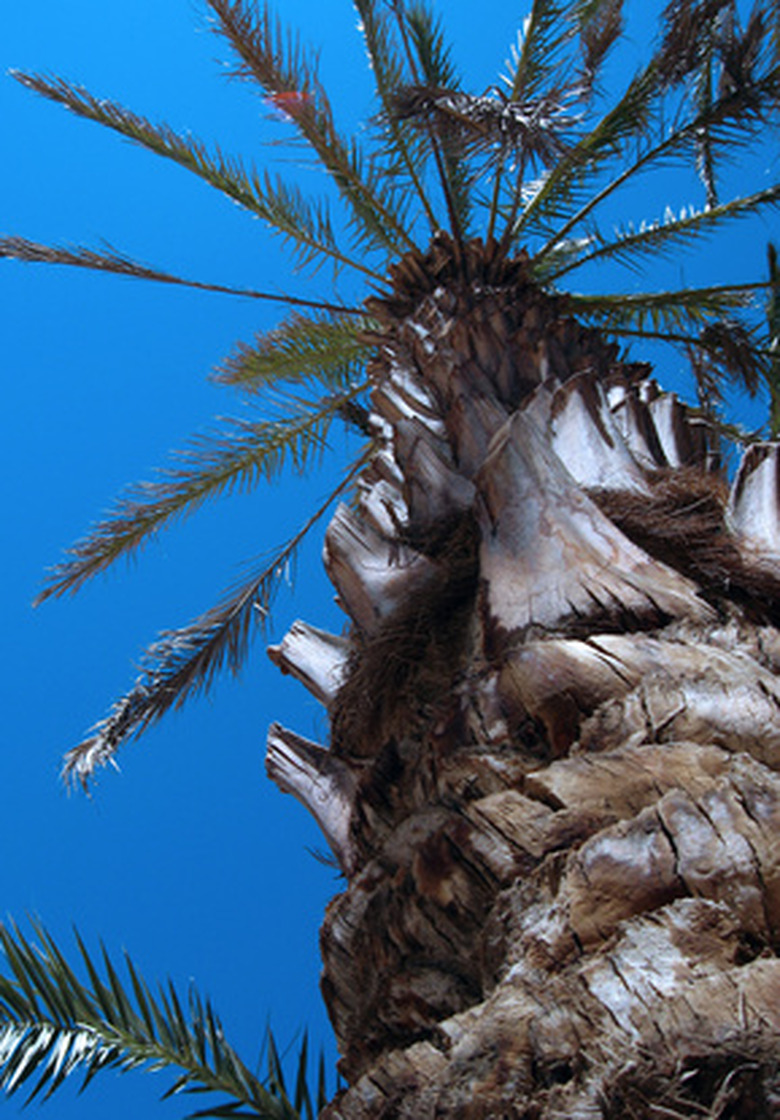How Do Palm Trees Survive Hurricanes?
Certain palm trees are almost hurricane-proof. These include sabal palms, different types of date palms, manila palms and pindo or jelly palms, according to studies conducted by the University of Florida based on data collected between Hurricane Andrew in 1992 and Hurricanes Rita, Katrina and Dennis in 2005. There are many factors contributing to a palm's ability to withstand wind, including the tree's age, whether it is native or exotic, the condition of the soil, the duration of the storm and whether the tree grows on its own or among other trees.
Sabal Palms and Others
Sabal palms are also known as cabbage palms. They are often overlooked as ornamental palms because they are not as attractive in their youth as other palm trees. Sabal palms can withstand winds up to 145 miles per hour. They have a single, nonbranching trunk and grow 50 to 70 feet tall as urban or landscape trees, but can grow up to 90 feet tall in the forest. Their crown is 12 to 18 feet in diameter. The sabal palm is native to the southeastern United States and the wood of its trunk is so strong that it is often used to make wharf pilings, docks and poles.
Palm Growth Habit and Foliage
The University of Florida explains that palms grow differently from other tree species, such as broad-leaved and conifer trees: They have one terminal bud. If the bud is left undamaged, the tree will survive, regardless of the harm done to its fronds, or leaves. In fact, some palm species—such as the royal palm—will preserve themselves by allowing their leaves to be snapped off in high winds in order to reduce overall wind resistance and spare the trunk and the bud from damage. Fronds will grow back within a few months to a year.
Storm Duration
The longer a hurricane is preceded by lots of precipitation, the more water there is in the soil. In general, this reduces the tree roots' ability to hold up the tree. Native palms have an advantage in this sense because they grow well in very wet or very dry soil. The sabal's native habitat, for example, is along estuaries and inlets in very wet areas, which means that the tree can tolerate a lot of water in its soil and is less likely to topple.
Rooting Space
The University of Florida study revealed that trees with plenty of rooting space—those grown in lawns, on college campuses or in parks, for example—had a much higher rate of survival than those growing too close to other trees whose root systems didn't have enough room to develop fully or properly. In addition, the study found that trees grown in groups of more than five, each tree within 10 feet of another, fared much better than those grown single-file.
Natives vs. Exotics
Sabal palms are often overlooked in favor of trees like the queen palm, which is generally considered to be more attractive that the sabal. The queen palm, an exotic species, has an extremely low wind tolerance. Only about 70 percent of queen palms stood up to the 120 mph winds of Hurricane Jeanne and almost half of them succumbed to the 165 mile-per-hour winds of that same hurricane. While other factors certainly contribute to the ability of palm trees to withstand hurricanes, native trees have the advantage of having evolved with the climate of hurricane-prone areas and are much more likely to survive.
